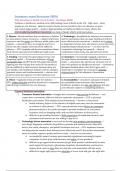Summary
Summary literature Innovation, Behaviour, Emergence and Markets (IBEM) (AM_1052)
- Course
- Institution
This is a summary of all the literature for the course Innovation, Behaviour, Emergence and Markets (IBEM), that is also exam material.
[Show more]












